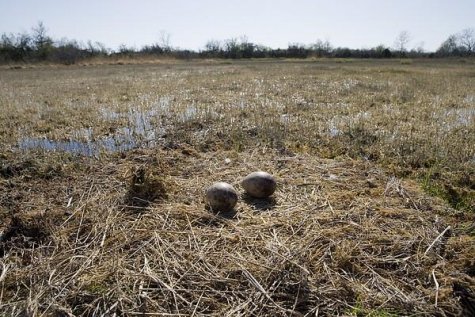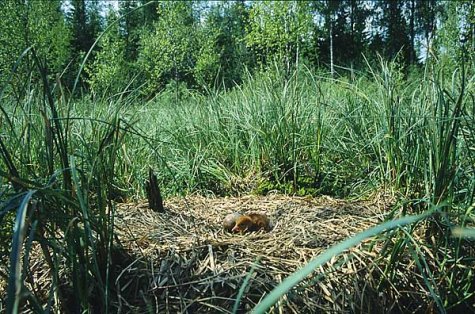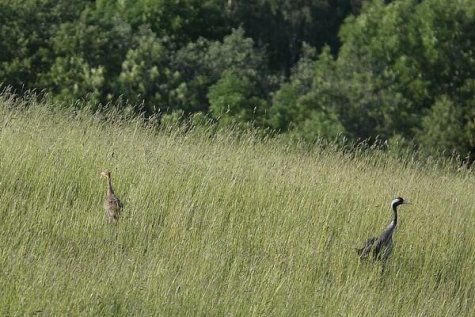About the nesting of cranes
Photos: Arne Ader
Translation: Liis
Crane nest. Osmussaar
Crane; Eurasian crane Sookurg Grus grus
Already in March we heard and saw these proud and graceful birds. In spring there is no mass migration passing Estonia and so we have mostly to do with the cranes nesting here; they may be up to 7 500 pairs.
Nest building starts in April, the long-legged birds can with advantage establish it in a watery spot that protects them from interferences and also from small predators. Chosen spots may be boggy lake banks, floodplains, shrubby bogs, open bogs … The adults carry in a great amount of moss, withered grass or reeds as the base for the nest and in early May the female lays large greenish brown-patterned eggs, usually two and with an interval of a day. The incubation period is four weeks.
Crane nest with chick and egg
The interval between the hatching of the chicks is as between laying the eggs, a day or two. The last hatched chick is allowed to dry for a day and become sturdier, and then the cranes are gone from the nest. Escorted by the parents they move around and feed near the nest during the first few days, but day by day they move farther away.
Cranes
Before Midsummer we can already see a view like this, and until autumn the crane families keep together. We will see the crane chicks in an almost true crane plumage in the latter half of August, but even then it is still easy to distinguish them from the adult birds.











